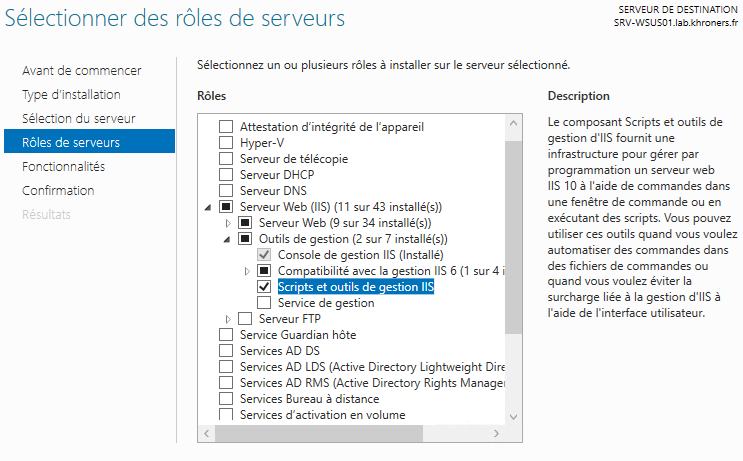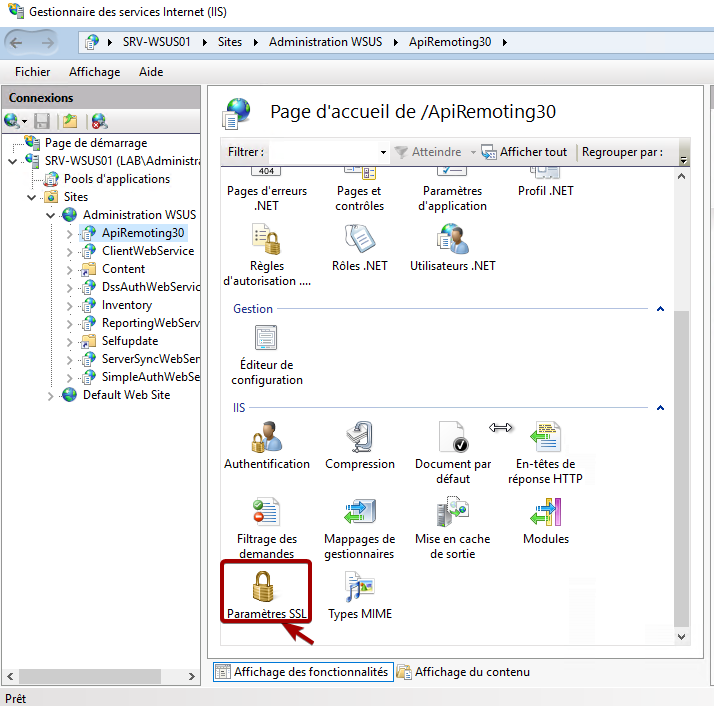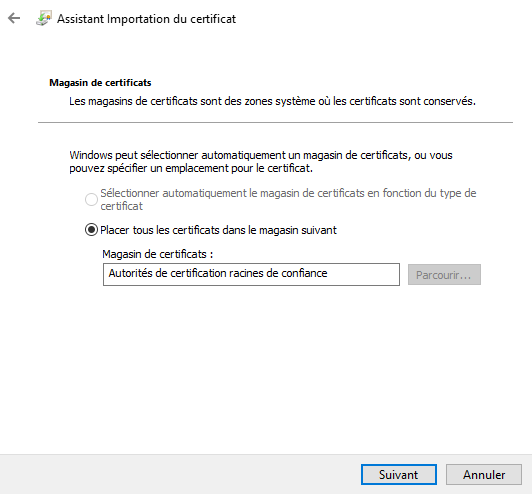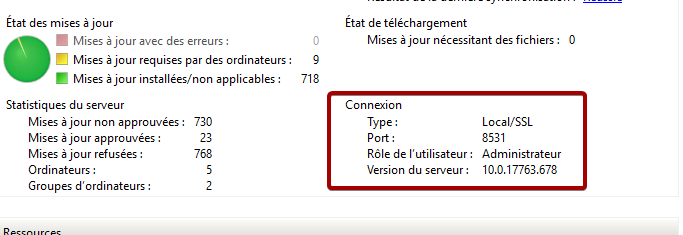Mise en place du TLS/SSL pour WSUS
Présentation
Par défaut, WSUS ne chiffre pas les données. De nombreuses failles ont été découvertes, et pour les corriger, il faut activer le SSL. Pour cela, on aura besoin de modifier la GPO de l'emplacement du WSUS (remplacer http:// par https://) et d'ajouter un certificat.
Un exemple de l'importance du SSL :
Vidéo YouTube faite par 2 intervenants au Black Hat
La mise en place du SSL demandera plus de performance sur le serveur, dû au chiffrement.
Pour la suite, il est nécessaire d'avoir de nombreux modules, comme "Scripts et outils de gestion IIS", GroupPolicy.
Activation du SSL sur WSUS
Dans mon cas, j'ai récupéré le certificat et la clé privée depuis mon serveur web (fullchain.pem et privkey.pem). J'ai converti en .pfx. Une page est disponible pour cela. De plus j'ai défini un mot de passe.
Import-Module ServerManager
Add-WindowsFeature Web-Scripting-Tools
Install-WindowsFeature GPMC
Install-Module -Name PowerShellGet -Force
Install-Module –Name IISAdministration
Import-Module WebAdministration
Import-Module IISAdministration
Import-Module GroupPolicy
$myFQDN=(Get-WmiObject win32_computersystem).DNSHostName+"."+(Get-WmiObject win32_computersystem).Domain ; Write-Host $myFQDN
# 1. Create a self-signed certificate
$SelfSignedHT = @{
DnsName = "$($env:COMPUTERNAME).$($env:USERDNSDOMAIN)".ToLower()
CertStoreLocation = "Cert:\LocalMachine\My"
}
New-SelfSignedCertificate @SelfSignedHT
$cert = Get-ChildItem -Path Cert:\LocalMachine\My -SSLServerAuthentication
# 2. Export its public key
Export-Certificate -Cert $cert -Type CERT -FilePath ~/documents/cert.cer
# 3. Import the public key in the Trusted Root Certificate Authorities store
Import-Certificate -FilePath ~/documents/cert.cer -CertStoreLocation Cert:\LocalMachine\Root
# 4. Select this certificate in the SSL bindings
$cert | New-Item IIS:\SslBindings\0.0.0.0!8531
# MANUALLY require SSL IIS - voir plus bas
# 6. Switch WSUS to SSL
& 'C:\Program Files\Update Services\Tools\WsusUtil.exe' configuressl $("$myFQDN".ToLower())
# 7. Change your GPO to point to the new URL
$key = 'HKEY_LOCAL_MACHINE\SOFTWARE\Policies\Microsoft\Windows\WindowsUpdate'
$uri = 'https://{0}:8531' -f $("$myFQDN".ToLower())
Get-GPO -All | Foreach-Object {
if ($_ | Get-GPRegistryValue -Key $key -ValueName WUServer -EA 0) {
$_ | Set-GPRegistryValue -Key $key -ValueName WUServer -Value $uri -Type String
$_ | Set-GPRegistryValue -Key $key -ValueName WUStatusServer -Value $uri -Type String
}
}
Sur IIS, pour chaque page, on change les paramètres SSL.
On fait cela pour SimpleAuthWebService, DSSAuthWebService, ServerSyncWebService, APIRemoting30 et ClientWebService.
Publication du certificat
Dans la GPO "WSUS - Location", on importe le certificat.
On importe ~/documents/cert.cer.
Conclusion
Dans la console WSUS, on est bien en SSL.
On peut vérifier les logs de Windows Update d'un client via l'invité Powershell :
Get-Windowsupdatelog






